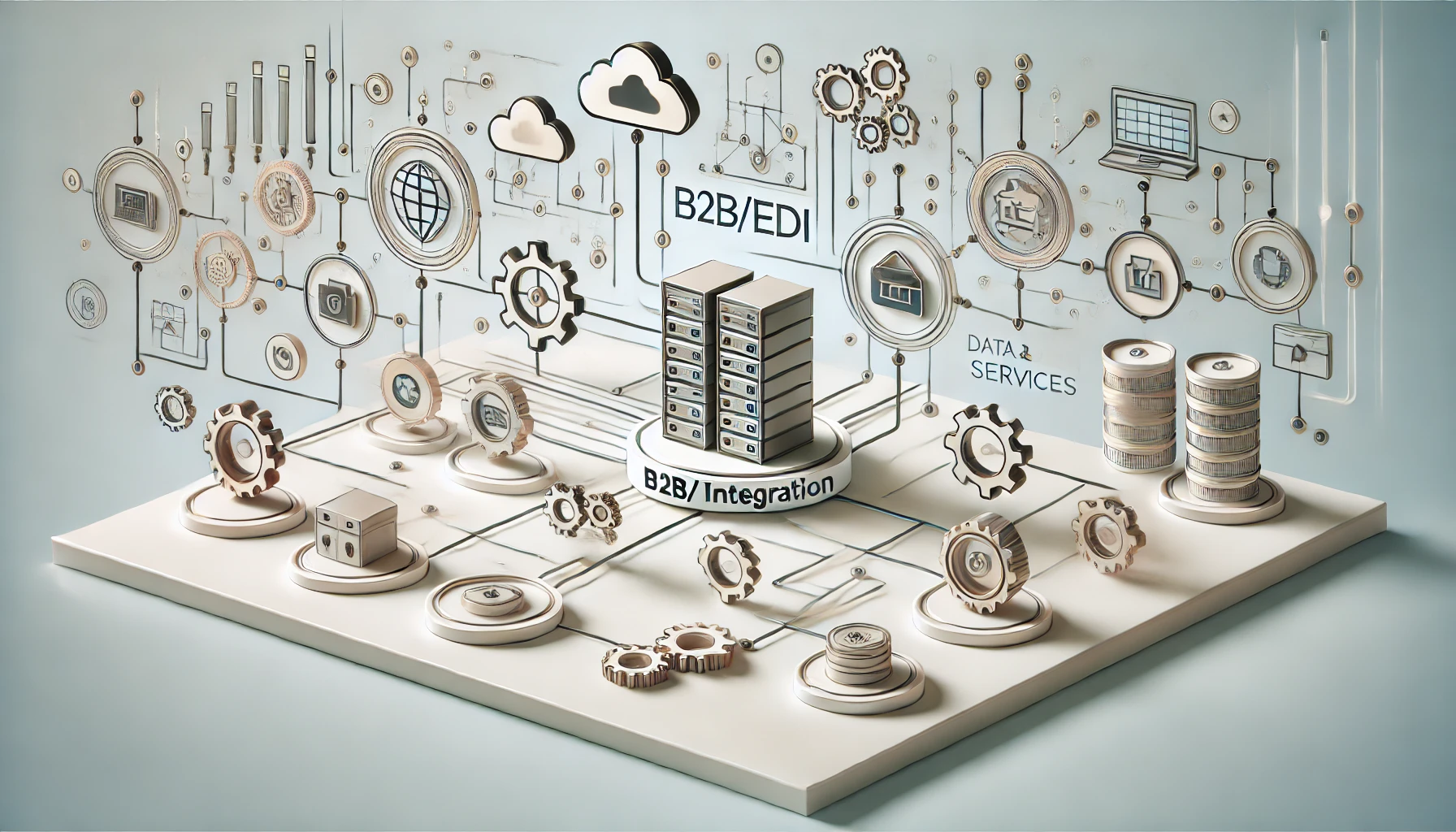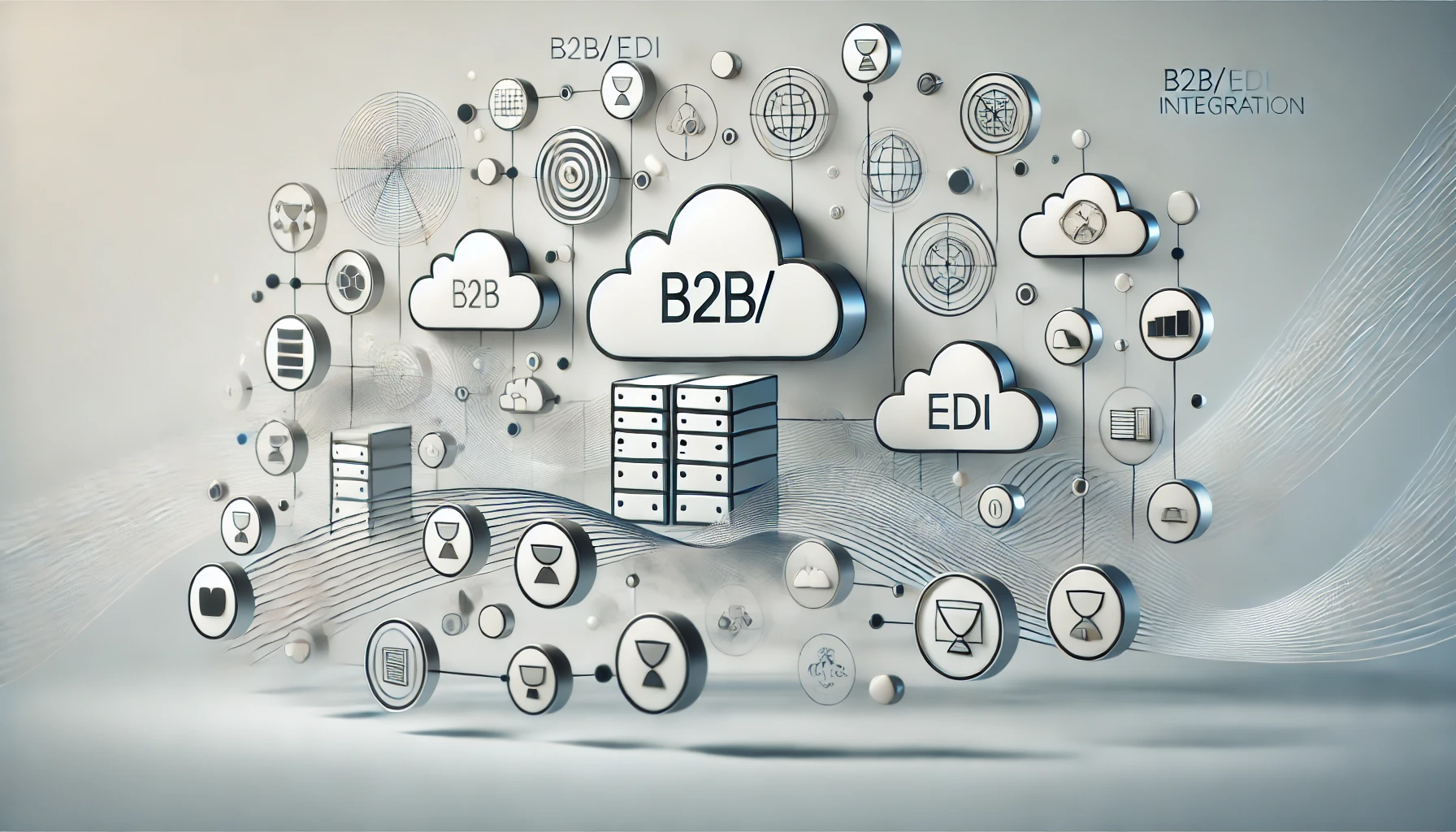You might not know that B2B/EDI integration services play a crucial role in optimizing business operations and fostering smoother collaboration with partners. Have you ever wondered how these services actually function behind the scenes to ensure seamless data exchange and communication between organizations? The intricacies of mapping data fields, establishing secure connections, and aligning data structures are just the tip of the iceberg when it comes to understanding the inner workings of B2B/EDI integration services. Let’s uncover the complexities of this essential business process and explore the mechanisms that drive efficient inter-business communication.
Process
When implementing B2B/EDI integration services, the process plays a crucial role in ensuring seamless connectivity and efficient data exchange between businesses. Integration benefits are numerous, including improved communication, streamlined operations, and enhanced productivity. A key aspect of the process is data transformation, where information is converted into a standardized format that can be easily exchanged between different systems.
Efficient data transformation is essential for ensuring that the data being exchanged is accurate, consistent, and compatible with the receiving system. This step involves mapping data fields, converting file formats, and applying any necessary data validation rules. By standardizing the data through transformation, businesses can eliminate errors, reduce manual intervention, and accelerate the exchange of information.
Steps
To move forward with implementing B2B/EDI integration services successfully, the focus now shifts to outlining the specific steps involved in the process.
1. Data Mapping
Data mapping is a crucial first step in B2B/EDI integration services. This involves aligning the data fields and formats between your systems and those of your trading partners. Understanding the data requirements and structures is essential for seamless communication.
2. Identify Trading Partners
Identifying the trading partners with whom you will be exchanging EDI documents is key. Establishing clear communication channels and agreements with these partners ensures smooth transactions and collaboration.
3. Set Up Connectivity
Once data mapping is complete and trading partners are identified, setting up the necessary connectivity is vital. This involves establishing secure connections, such as VANs or AS2 protocols, to enable the transfer of EDI documents between systems effectively.
Tools Used
For implementing B2B/EDI integration services successfully, utilizing the right tools is essential. Two critical tools in this process are data encryption and managing trading partners effectively. Data encryption ensures that sensitive information exchanged between you and your trading partners remains secure and protected from unauthorized access. It is crucial to use robust encryption methods to safeguard the integrity and confidentiality of the data being transmitted.
When it comes to managing trading partners, having the right tools in place can streamline communication, enhance collaboration, and ensure smooth transactions. Utilizing tools that can help onboard, validate, and maintain trading partner information is key to establishing strong and reliable relationships. These tools can automate processes, reduce errors, and improve overall efficiency in your B2B interactions.
Choosing the right tools for data encryption and managing trading partners is fundamental to the success of your B2B/EDI integration services. By investing in the appropriate tools, you can enhance security, streamline operations, and foster better relationships with your trading partners.
Implementation
Having established the significance of utilizing the right tools such as data encryption and efficient trading partner management in B2B/EDI integration services, the next critical phase is the implementation process.
- Vendor Selection: The initial step involves carefully choosing a vendor that aligns with your business needs and provides robust integration solutions.
- Data Mapping: Detailed data mapping is essential to ensure that information is accurately transferred between systems, requiring thorough planning and coordination.
- Testing Phase and Training Sessions: Prior to full implementation, a comprehensive testing phase is crucial to identify and rectify any issues. Additionally, conducting training sessions for your team ensures they are proficient in operating the new system effectively.
Successful implementation hinges on meticulous planning, clear communication with the chosen vendor, and thorough testing. By prioritizing vendor selection, data mapping, and comprehensive testing and training, you can streamline the integration process and maximize the benefits of B2B/EDI integration services.
Workflow
Ensuring a well-defined workflow is crucial in optimizing the efficiency and effectiveness of B2B/EDI integration services. A streamlined workflow is key to achieving integration efficiency and seamless data synchronization between trading partners. When establishing the workflow for B2B/EDI integration, consider mapping out the entire process from the initial data exchange to the final confirmation. Identify the key touchpoints where data is transmitted and received, ensuring that each step is clearly defined and understood by all parties involved.
To enhance integration efficiency, automate repetitive tasks such as data mapping, translation, and validation. Utilize workflow automation tools to trigger actions based on predefined rules, reducing manual intervention and minimizing errors. Implement robust monitoring mechanisms to track the flow of data throughout the integration process, enabling timely identification and resolution of any discrepancies.
Data synchronization plays a critical role in maintaining consistency and accuracy across interconnected systems. Implement data validation checks at each stage of the workflow to ensure that information is synchronized accurately between systems. Regularly audit data synchronization processes to identify and address any discrepancies promptly. By prioritizing a well-structured workflow, you can enhance integration efficiency and facilitate seamless data synchronization in B2B/EDI integration services.
Frequently Asked Questions
Can B2b/Edi Integration Services Handle Complex Data Formats?
Yes, b2b/edi integration services can handle complex data formats with ease. Their data mapping flexibility allows for seamless integration of various formats, ultimately impacting efficiency positively by streamlining processes and ensuring accurate data exchange.
What Security Measures Are in Place for Data Transmission?
When it comes to data transmission security, encryption protocols and authentication methods are crucial components. These measures ensure that your information is protected from unauthorized access and interception, safeguarding the integrity and confidentiality of your data.
How Does the Service Handle System Downtime or Outages?
When disasters strike, you’ll witness a ballet of chaos tamed by meticulous planning. Disaster recovery and redundancy planning ensure seamless transitions during system downtime or outages. Your operations remain unscathed, a fortress amidst digital storms.
Are There Customizable Options for Specific Business Needs?
When it comes to meeting your specific business needs, there are customizable options available for you. These solutions ensure scalability and adaptability to grow alongside your organization, providing tailored integration services that align with your unique requirements.
Can B2b/Edi Integration Services Integrate With Legacy Systems?
Yes, B2B/EDI integration services can seamlessly integrate with legacy systems, addressing common integration challenges. This compatibility ensures smooth data exchange and workflow continuity, optimizing efficiency and productivity within your organization. Enjoy streamlined operations and enhanced performance.



